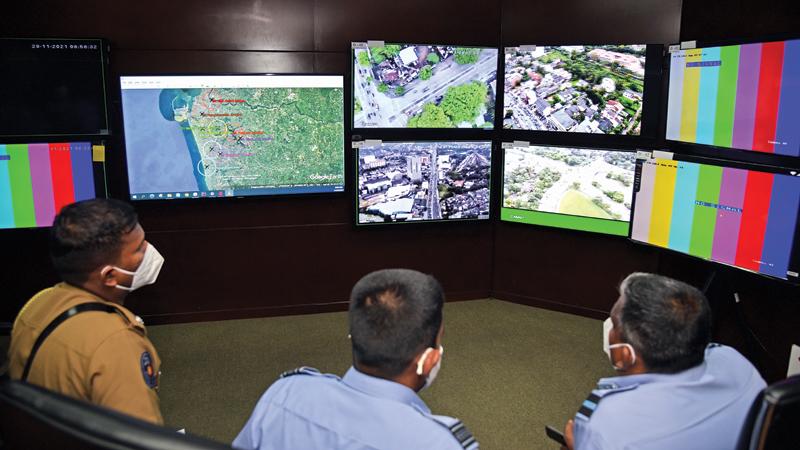
The Air Force joined hands with the City Traffic Police to use unmanned aerial vehicles (drones) to help ease traffic congestion in the Colombo city during peak hours.
 Air Force Commander Air Marshal Sudarshana Pathirana |
The project was launched on November 24, on a request by President Gotabaya Rajapaksa to the Air Force Commander Air Marshal Sudarshan Pathirana to bring in drone technology to help the Traffic police to better manage the traffic flow in the Colombo city.
The President had briefed the Air force Commander, on the sidelines of the Security Council meeting on November 23, where he highlighted the need to come up with a short-term solution to save fuel and travel time at a time the country is struggling to overcome economic challenges due to the Covid-19 pandemic.
The Air force has trained 25 police officers on drone technology. The entire project will be transferred to the City Traffic Division eventually.
Currently, an operations room, set up at the Air Force Headquarters, manned by airmen and two senior traffic cops, coordinate the drone transmissions and relay the information to the traffic policemen on the road.
 Director, Air Intelligence Air Commodore Thushara Weeraratne
|
Nine drones are positioned at nine entry locations to the Colombo city to monitor the traffic flow and immediately detect problems. Response teams - traffic cops on motorcycles - will be deployed when a traffic issue is reported, in coordination with the Operations Room.
The Air Force drones are positioned at the New Kelani Bridge, Maradana Junction (Technical Junction and Panchikawatte alternatively), Ayurveda Junction, Polduwa Junction, Kian Nam Junction, Nugegoda Junction, Dehiwala Junction, Kirulapone Junction and Nelum Pokuna Junction.
Twenty such two-member riding teams are on standby to respond to emergencies. The drone footage is being recorded on nine big screens set up at the Ops-Room.
“Our team will provide the aerial footage to help improve situation awareness to the traffic cops, the much needed eagle eyes to carry out their job effectively,” Director, Air Intelligence Air Commodore Thushara Weeraratne told the Sunday Observer.
“The recorded footage will be used to streamline traffic control on the road and initiate action on traffic offenders,” he said.
The pilot project has proven effective so far, he said, adding that the traffic flow is still below average due to remaining pandemic restrictions. They hope to fine tune the project by the time it gets back to normal. City Traffic OIC Chief Inspector Bandara is in charge of the project for the Police.
The drones are being used from 7.30am to 9.30am and 4.30pm to 6.30pm. When schools begin their normal schedule, the team hopes to introduce the drone assisted traffic management plan during the school rush time as well.
A Bell 212 helicopter was also used in addition to the drones when this project was launched on November 24. “We realised that the use of a helicopter was not practical, it could not hover above one location for a long time and the costs did not match the requirements. The sound pollution too outweighs the advantages,” Air Commodore Weeraratne said.
The project is also expected to enhance road discipline among drivers to a significant degree.

Footage captured by the Air Force drones
